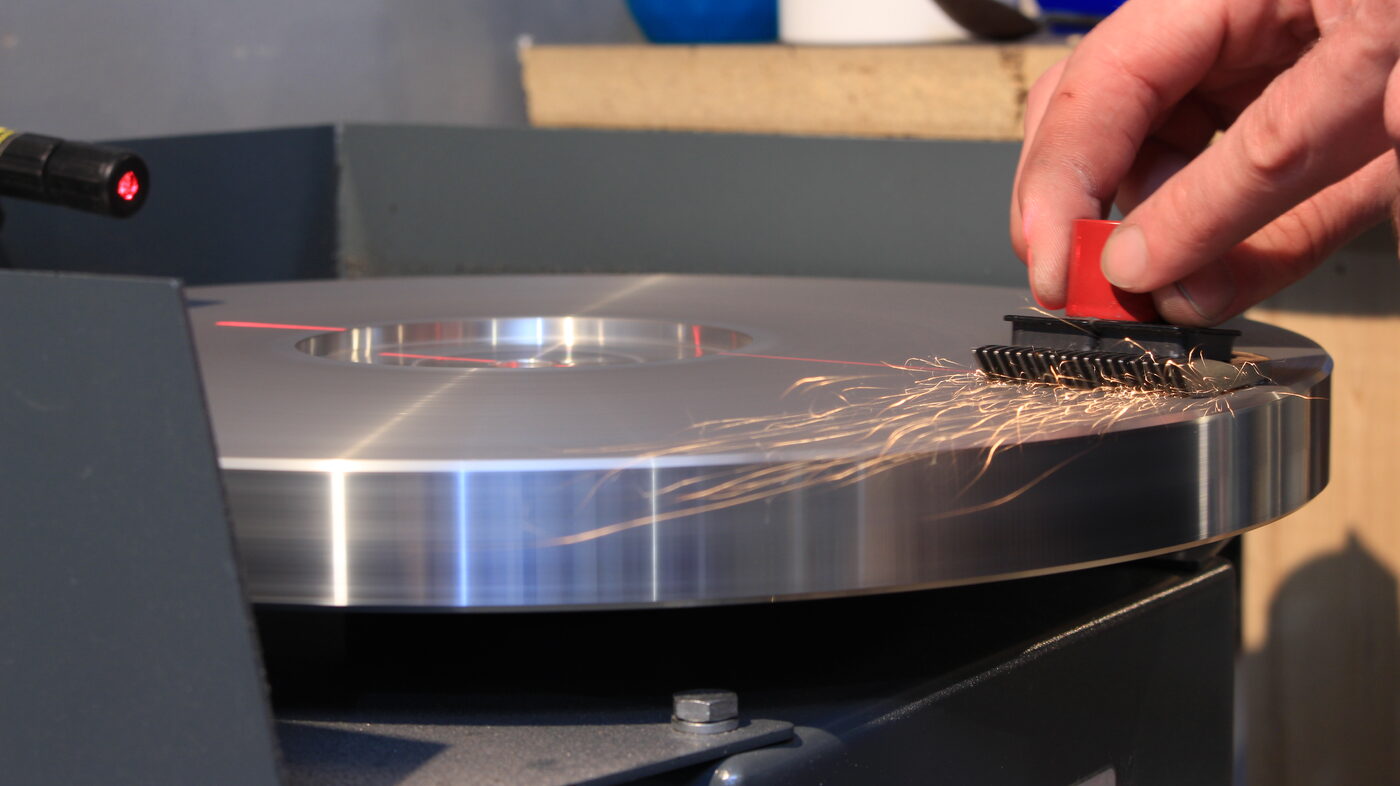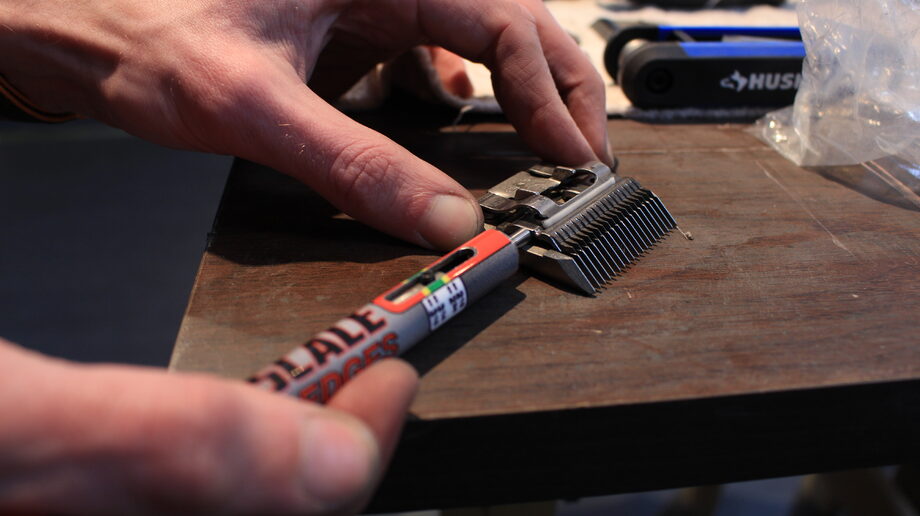Two blades
in a perfect dance
Not the scissors at this time, but similar! The clipper blade is indeed a miracle of the human mind and engineering. It combines a complex shape of the cutting edge of the comb and the cutter, precise spring tension level and high speed. Modern clipper blades can run as fast as 8000 spm (stroke per minute)! Let's look into it deeper and see what we can find.
It's important to remember that helping a shop with its needs can sometimes lead to trouble if you don't know the operating rules of the tool that's being sharpened. Thanks to our patient customer for allowing us to rectify the problem by taking the work back, finding the mistake, and purchasing new equipment.
While clipper blade sharpening may seem simple, it's crucial to consider blade geometry during the sharpening process. If we ignore this aspect, the blades won't cut properly.
While clipper blade sharpening may seem simple, it's crucial to consider blade geometry during the sharpening process. If we ignore this aspect, the blades won't cut properly.
The comb.
Reflection reveals teeth imperfection.
Reflection reveals teeth imperfection.
Not knowing the ins and outs and thinking that the comb and the top cutter must be perfectly flat, I later learned that if they are both flat, the clipper blade will not be able to cut the hair properly. Instead, it might chew up the hair or push it away. Despite my efforts to make both parts sharp to the point where I could see my reflection,
the client was still unhappy with the result.
the client was still unhappy with the result.

Credit: scissortech.co.uk
Upon further research, I stumbled upon a hidden world within a seemingly ordinary tool. Simply speaking, envision a cone that is flattened into a disk shape. The outer edges of the disk are slightly thinner than the centre. I am describing the shape of the aluminium sharpening plate that comes with a professional sharpening equipment. The tapered plate is the key that gives the complex shape to the clipper blades during sharpening. I found enough people saying they have been sharpening clipper blades on a sand paper for years, but little to none of them show the result.
An exaggerated example of this shape is a pair of hair scissors. Some of them have a hollow shape on the inner side of the blade. What a briliant mind!
There is one exception to the rule. Some clipper blades may have a flat sole plate if the top cutter has a setting allowing it to move back and forth on the sole plate to set the length of the cut. In that case, the cutter still has hollow grind sharpening, and the sole plate is flat.
An exaggerated example of this shape is a pair of hair scissors. Some of them have a hollow shape on the inner side of the blade. What a briliant mind!
There is one exception to the rule. Some clipper blades may have a flat sole plate if the top cutter has a setting allowing it to move back and forth on the sole plate to set the length of the cut. In that case, the cutter still has hollow grind sharpening, and the sole plate is flat.
The clipper blades, like scissors, have a precise shape that enables cutting. It is worth noting that there are many options for clipper blades on the market today. The most common ones are hair trimmers used in barber shops and groomer blades for grooming small animals. There are also different sizes of groomer blades: larger ones for goats, sheep, and other animals. By the way, if you look at the bottom blade of the large animal grooming scissors, you'll understand why I'm a little intimidated by the look of it. Ha ha.

Credit: www.clippersharp.com

All clipper blades have the same structure and operating principle. They consist of a sole blade (comb), a top cutter, a spring with a slider and a socket. Included are two screws and a plastic slide that slides over the spring. To make all of these components work properly, the following points must be addressed:
1. The shape of the comb and cutter.
2. The condition of the socket.
3. Spring tension.
4. Degree of wear of the slide.
5. Lubrication.
6. General cleanliness of the blade.
1. The shape of the comb and cutter.
2. The condition of the socket.
3. Spring tension.
4. Degree of wear of the slide.
5. Lubrication.
6. General cleanliness of the blade.

Coin in the air, and here we are investing in a new clipper blade sharpening machine from Thorvie. Eventually, after weeks of researching, trying, critical thinking, and waiting, we finally figured out how to sharpen clipper blades! Fortunately, Thorvie provided a rubbing block with the machine to ensure the quality of the work. Turns out, to make the clipper blades last as long as possible, we only need to remove ~0.002/in to reshape the cutting edge of the clipper blade to the original condition. Luckily, we now have measuring equipment to ensure accuracy of the sharpening process. The more you know...
I will shortly explain the sharpening process in the article to avoid making it a long read.
I will shortly explain the sharpening process in the article to avoid making it a long read.

The socket block
After all clipper blades have been disassembled and cleaned, a few things need to be done before we start sharpening the cutter and the comb. We need to ensure that the socket is in the correct shape. To do this, we use pliers and a socket block to reset the clipper blade as closely as possible to its original condition.

Sharpening clipper blades can be a tricky thing to do. While the part is fixed on a strong magnet, the sharpener needs to ensure the blade doesn't overheat during the process. You don't press too hard on the part and it must be perpendicular to the center of the sharpening wheel. Laser pointer helps to keep the part straight while sharpening. It takes 5-10 seconds to sharpen a part but takes 13-17 seconds to overheat it. So precise movements and just the right pressure are required to do the job.
After sharpening, we use a test plate to ensure the right shape of the comb and the top cutter.

Clipper blade spring tension test scale at work
If the spring tension is set incorrectly, it can cause parts to crack, overheat, break, or deform during operation.
There are many opinions on the internet about how tight the spring should be, and some sharpening shops use a scale to measure the spring tension. However, the recommendations vary between 1.5 to 3.5 pounds, which is a large gap. We also purchased a spring tension test scale tool to set up the spring tension.
The main feature of the tool is that it measures the spring tension while the top cutter is placed under the spring as it would be during regular use. That level of accuracy isn't possible using a regular kitchen scale. The tool has green zone markings to indicate that the spring has enough tension. The seller claims proper spring tension is between 2-3/4 to 3-1/4 pounds of pressure, and it is much less of a gap than the previous methods suggest.
There are many opinions on the internet about how tight the spring should be, and some sharpening shops use a scale to measure the spring tension. However, the recommendations vary between 1.5 to 3.5 pounds, which is a large gap. We also purchased a spring tension test scale tool to set up the spring tension.
The main feature of the tool is that it measures the spring tension while the top cutter is placed under the spring as it would be during regular use. That level of accuracy isn't possible using a regular kitchen scale. The tool has green zone markings to indicate that the spring has enough tension. The seller claims proper spring tension is between 2-3/4 to 3-1/4 pounds of pressure, and it is much less of a gap than the previous methods suggest.

And the final step is to ensure the clipper blade has enough lubrication. As mentioned earlier, the top cutter can move on the plate as fast as 8000 spm, if not faster. If the bare metal is rubbing against bare metal or ceramic at that speed, the clipper blade will get hot beyond the working temperature. The same thing can happen if we leave any organic or non-organic debris stuck between the moving parts. We use odorless oil to make sure your clipper blades stay sharp as long as possible!
We are always ready to admit a mistake to save our reputation. Ultimately, we want to see our customers 100% satisfaction with the results we provide.
Clipper blade sharpening is one thing we improved on and we want you to know about our fails, so you can learn from it.
Clipper blade sharpening is one thing we improved on and we want you to know about our fails, so you can learn from it.
